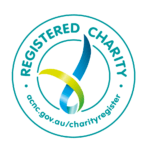Welcome to the 102nd edition of the Research Digest. This year’s final edition delves into research identifying potential biomarkers for long COVID and those meeting ME/CFS consensus criteria. We also highlight an Australian study assisted by Emerge Australia, showcasing the significant contribution of the ME/CFS patient/carer advisory group in determining the economic burden of ME/CFS on its citizens. This edition concludes by spotlighting Dave Clark’s journey and his pursuit of meaning in life, while living with ME/CFS.
Contributing Digesters: Sarah, Solène, Shan and Simone
Digest Editor: Simone Eyssens
You can also join our community and choose to have the Digest delivered straight to your inbox at the end of every month, by signing up to our mailing list here. We appreciate the support of everyone who reads the Digest – we encourage regular subscribers to support us with a monthly suggested donation of $2.
Long-term symptom severity and clinical biomarkers in post-COVID-19/chronic fatigue syndrome: results from a prospective observational cohort
Authors: Legler F, Meyer-Arndt L, Mödl L, Kedor C, Freitag H, Stein E … Bellmann-Strobl J (Charité – Berlin University Medicine, Germany).
Publication: eClinical Medicine
Link:https://www.thelancet.com/journals/eclinm/article/PIIS2589-5370(23)00323-1/fulltext
A wide range of symptoms are associated with post-COVID-19 syndrome (PCS), including fatigue and exertion intolerance. The early course of post-infection disease following COVID-19 has been well described in the literature. This study sought to focus on the long-term health consequences of PCS with disabling fatigue.
This was a prospective observational cohort study, with participants recruited from the neuroimmunology outpatient clinic of Charite-Berlin University. 106 PCS participants with moderate to severe fatigue and exertion intolerance were included in the study. Of these participants, 55 met the Canadian Consensus Criteria (CCC) for ME/CFS (PCS-ME/CFS). Symptom severity and a range of biomarkers including hand grip strength, cardiovascular function and laboratory testing were measured at three time points after infection: 3-8, 9-16, and 17-20 months.
PCS-ME/CFS participants reported persistently high symptom severity (including fatigue, PEM, functional disability, emotional well-being and pain) at all time points, whereas PCS participants showed improvements over time. Fatigue, post-exertional malaise and neurological symptoms remained present in both groups, however, were more significant in PCS-ME/CFS participants. From laboratory testing, inflammatory biomarkers decreased in both groups over time, but antinuclear antibodies remained elevated. Lower levels of hand grip strength at the time of infection appeared to be associated with persistent symptoms, particularly in the PCS-ME/CFS group.
The authors propose that these findings demonstrate that PCS can persist beyond 20 months. The chance of improvement during the 20 months post-infection remained particularly low in patients fulfilling CCC. Subclassifying PCS patients that fulfil the CCC may assist in their management and monitoring due to persistently severe symptoms.
Distinguishing features of long COVID identified through immune profiling
Authors: Klein J, Wood J, Jaycox J, Dhodapkar RM, Lu P, Gehlhausen JR, … Iwasaki A (Yale School of Medicine, USA)
Publication: Nature
Link: https://www.frontiersin.org/articles/10.3389/fnins.2023.1203514/full
The most common symptoms of long COVID are well-known but, its underlying pathogenesis remains unclear. To unravel specific biological mechanisms of long COVID, the authors performed a multi-dimensional immune phenotyping and developed unbiased machine learning models to identify potential biomarkers.
The authors did a cross-sectional, multi-site study and selected 275 participants divided into five groups as follow: (1) healthy, uninfected controls (Healthy Controls or HC); (2) healthy, previously SARS-CoV-2 infected controls without persistent symptoms (Convalescent Controls or CC); (3) healthy, unvaccinated, previously SARS-CoV-2-infected historical controls (Healthcare Workers or HCW); (4) individuals with persistent symptoms following acute SARS-CoV-2 infection (long COVID or LC); and (5) external long COVID group (Ext LC) were identified from The Winchester Center for Lung Disease’s Post-COVID-19 Recovery Program at Yale New Haven Hospital. The HC, CC, and LC participants (42, 42, and 101 individuals respectively) were recruited from the Mount Sinai Healthcare System. The HCW, and Ext LC participants (40, and 53 individuals respectively) were recruited from the Yale New Haven Healthcare System.
Based on self-reported symptoms, the authors calculated a long COVID Propensity Score (LCPS). Using a logistic regression model of LC vs all other participants, they identified 3 distinct long COVID clusters of participants with similar sets of self-reported LC symptoms correlating with low, intermediate, and high LCPS.
Immune phenotyping of circulating cell populations in plasma showed significant differences in LC participants compared to controls. More specifically, differences were observed in circulating immune cells, SARS-CoV-2 specific antibodies responses, cortisol and soluble immune mediators, and antibody responses to herpesviruses.
The authors built several machine-learning models to classify LC and control populations (after matching individuals to account for potentially confounding features). They identified serum galectin-1 concentration, and IgG against various EBV epitopes as features positively associated with long COVID. On the other hand, serum cortisol, PD-1+ / CD4+ Tcm, and cDC1 cells were negatively associated. External validation in the Ext LC cohort of one of the LASSO models generated revealed that serum cortisol was the most significant predictor of long COVID. The classification accuracies of long COVID Propensity Score models substantially aligned with those obtained through machine learning, suggesting that both participant-reported outcomes and immunological features efficiently predict long COVID.
Collectively, these findings provide a basis for future studies to unravel long COVID pathobiology and identify relevant biomarkers.
The economic burden of myalgic encephalomyelitis/chronic fatigue syndrome in Australia
Authors: Zhao T, Cox IA, Ahmad H, Campbell JA, Hensher M, Palmer AJ, … de Graaf B (University of Tasmania, Australia)
Publication: Australian Health Review
Link: https://doi.org/10.1071/AH23106
This study aimed to estimate the average direct and indirect costs associated with ME/CFS to patients, their carers, the government, and Australian society as a whole. Understanding the financial burden of ME/CFS is important for influencing government policy, the development of clinical guidelines and treatment plans, targeting research support to the development of diagnostics and therapeutics, and assisting advocacy.
The authors recruited 175 adults with self-reported ME/CFS and 23 carers via the Emerge Australia website, and advertisements on Facebook, radio, and in newspapers. Participants completed a survey of the clinical, social, employment, and financial impacts of ME/CFS, which was designed in conjunction with Emerge Australia’s Patient Advisory Group. Participants also provided either a self-reported cost diary (127 patients) or access to their data from the Pharmaceutical Benefits Scheme (PBS) and Medicare Benefits Schedule (MBS) (48 patients). Illness severity was determined by the DePaul Symptom Questionnaire (Short Form) (DSQ-SF). Lost wages were calculated based on projections from employment prior to illness, or, for those who had never worked, assumed to be the national average.
The government incurred a cost of $3090 per patient per annum in direct medical costs (such as prescription medications, healthcare professional visits, and hospital admissions). For patients, direct medical and non-medical costs were an average of $6655 per annum, whilst indirect costs (such as lost wages, absenteeism, and presenteeism) amounted to an average of $46 731, with costs varying based on illness severity. Annual average societal cost per person with ME/CFS were $63 400. Depending on which ME/CFS prevalence rate used (primary care-based rate is a conservative 0.104%, whilst community-based rates are a higher 0.76%), Australian society is losing anywhere from $1.38 to $10.09 billion per year.
Disability severity was found to be the main factor driving costs, particularly indirect costs. Because those with severe disability were proportionately less likely to complete this survey and the fact that the majority of the survey was from self-reported costs rather than PBS/MBS data, the authors conclude that it is likely that this study underestimates the economic burden of ME/CFS.
How Dave Clark regained a meaningful life after developing chronic fatigue syndrome
Authors:Clark D
Publication: ABC News
Link: https://www.abc.net.au/news/2023-12-08/dave-clark-on-living-with-chronic-fatigue-syndrome/103071294
Dave Clark has been living with ME/CFS for 17 years, having developed the condition after a bout of glandular fever when he was 21. In this article, he describes what it’s like to live with the condition, the impact on his life and sense of self worth, and how he has built a meaningful life, despite the condition.
“Living with chronic fatigue syndrome (CFS) is like being erased. It rubs out what my brain and body can do, turning me into a reduced version of myself.”
“Having CFS is like being a dormant seed, waiting for just enough energy to come alive.”
“There are then the hits to my sense of worth. Often, when my body produces less, I’m seen as worth less. This message is reinforced by the meagre amounts of finance and research put towards CFS in Australia. It is disheartening when something like the burrowing habits of an animal receives more funding than humans trapped inside their homes by CFS.”







